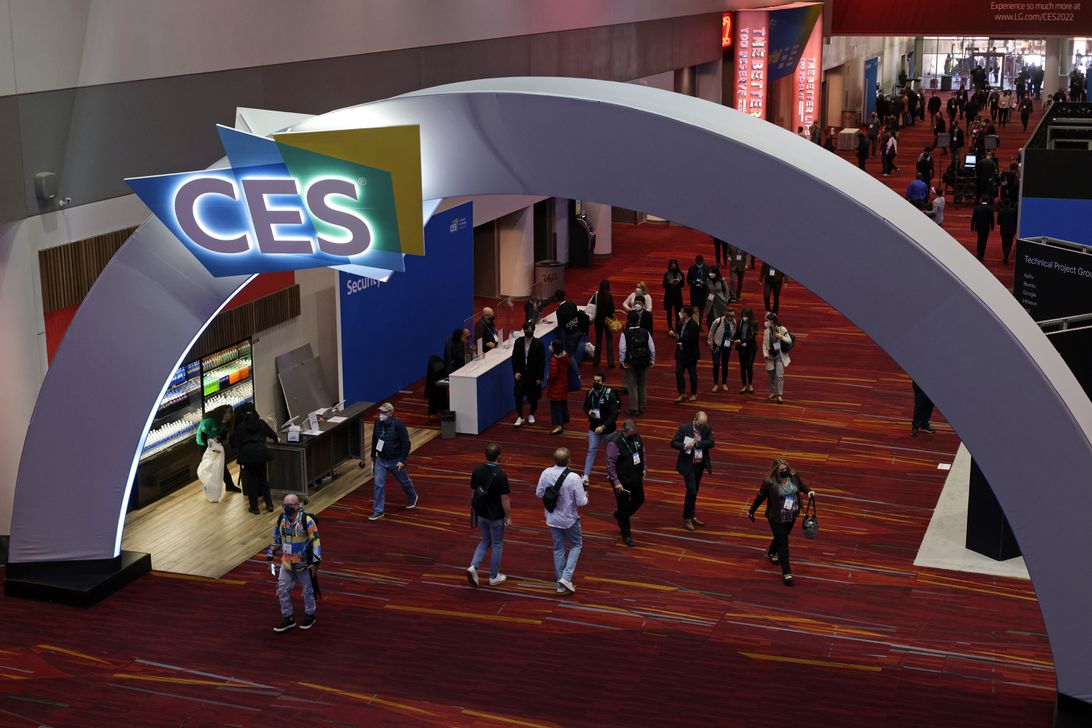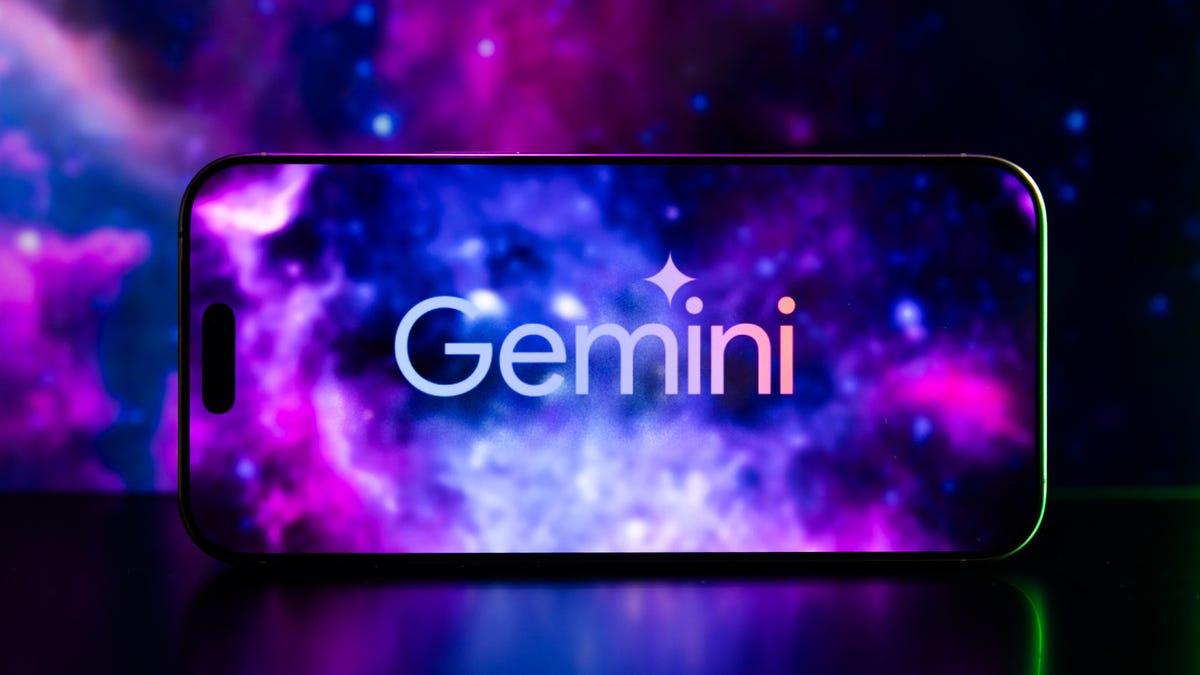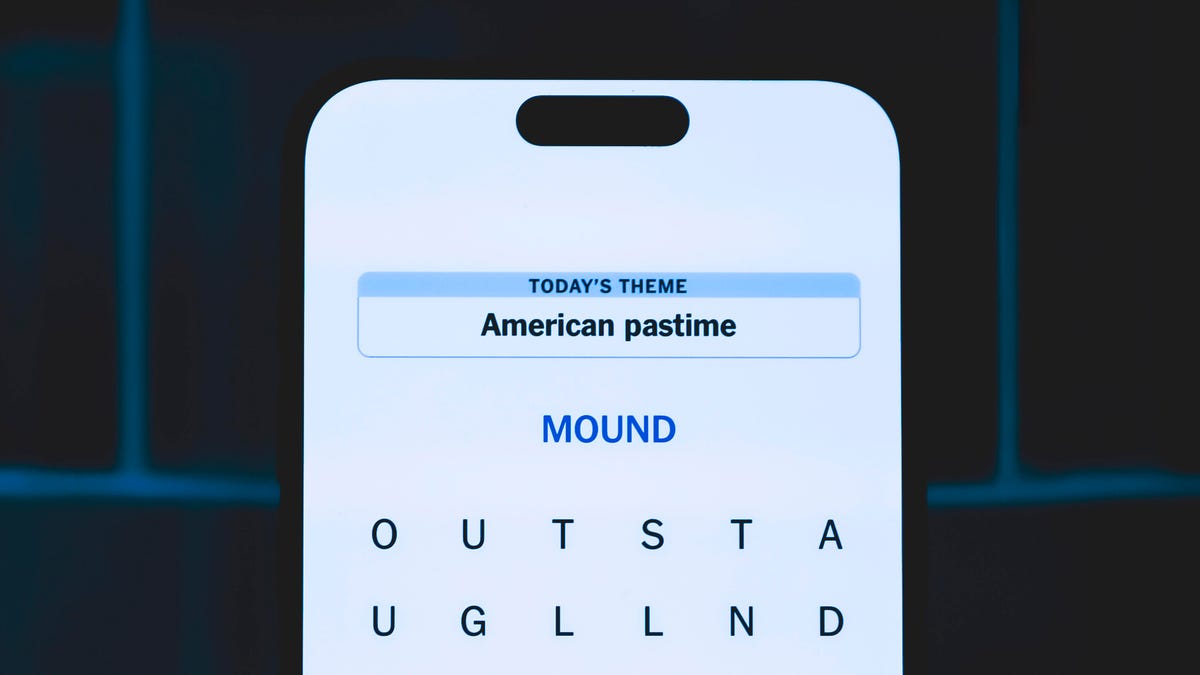Technologies
We lost so much with a mostly virtual CES
The biggest losers at the massive tech industry trade show are the small companies you’ll never hear about.

Dave Morgan has been attending CES for 25 years and has seen all sorts of gizmos and gadgets along the way. If you squint at photos from past shows, you might find him gawking at the curved TVs. Or he might be in the background as someone’s controlling a computer through a headband sensing their thoughts.
But Wednesday, at the opening morning of 2022’s show, the longtime ad industry executive and investor saw something quite out of the ordinary while getting some early exercise. The sea of up to 180,000 attendees who typically flood into Las Vegas for one of the world’s largest trade shows was mostly gone.
«Early morning run on pretty empty Vegas strip,» he tweeted out, before adding he’s «actually looking forward to exploring the #ces floor without the crowds.»
Morgan’s experience of a quieter CES in Vegas is one that many people missed out on. But it wasn’t just that. The sharply reduced crowds — estimated to be less than half of the 150,000 who attended CES two years ago — meant an even bigger obstacle for the small companies that for years have relied on buzz from the show to serendipitously turn them into breakout stars with surprise products that grab the industry’s attention.
«When you’re a smaller company, CES could be your biggest marketing spend,» said Moor Insights and Strategy analyst Patrick Moorhead, who attended this year’s CES in person. «It can be a make or break event for you.»
The CES challenge illustrates another way the COVID-19 pandemic continues to upend the way we work and live. Not only has the pandemic led to 9.5 million confirmed cases and 5.4 million people killed around the globe, it’s also left many people wondering what a post-COVID world will be like, much less how we’ll hold large-scale events like CES.
Read more: The 5 big CES 2022 takeaways everyone’s talking about
The pandemic’s uncertainty has hit everyone, whether they’re working in education, finance or real estate. In the tech world, it means that small companies for which CES could be the ultimate launching pad may struggle a bit more to take off.
In the past, companies like the VR headset startup Oculus offered demos at CES 2014, building buzz mere months before Facebook bought the company for more than $2 billion. There’s also Impossible Foods, the plant-based food company that landed an agreement with fast food giant Burger King after a CES meeting.
«It’s hard to do that in a digital setting,» said Jean Foster, head of marketing at the Consumer Tech Association, which puts on CES.
After last year’s experiment with an all-digital show, she said surveys of attendees and media alike agreed that holding the event in person would be better. And so this year, the CTA decided to press forward with an in-person event, with the caveat that attendees must have proof of COVID vaccination and international travelers must provide a negative COVID test taken within one day prior to taking their flight. The CTA even handed out free COVID testing kits when people arrived.
As health experts have repeatedly noted, none of us has ever lived through a pandemic of this scale. That means companies are learning how to function in this environment without a clear game plan, backed by decades of business school studies and success stories.
«It’s a different model set up for people,» Foster said.
Blending the virtual and real worlds
For more than a decade, CES attendees have debated the show’s relevance. Is it up or is it down? Is it as exciting as it once was or is it just an empty spectacle?
The pandemic gave us some answers. Over the past couple years, tech giants like Samsung, Sony and Facebook have largely figured out how to hold all-virtual events that attract their own buzz. Apple has announced two years worth of iPhones through these events. Microsoft, meanwhile, used online presentations to unveil both its Windows 11 software and its latest Xbox game console.
But CES organizers needed to recalibrate for the more than 2,300 companies coming together over one of the tech industry’s busiest weeks of the year.
One thing the CTA changed was how long presentations ran. The organization noticed that people viewers tended to drop off about 20 minutes into presentations that were given for the all-online CES of 2021. So, this year’s press conference slots were shortened to about a half hour each.
The CTA also reduced the number of live streams offered through its site so visitors wouldn’t feel overwhelmed. And to help attendees communicate with exhibitors and chat and set up meetings, the CTA also leaned more heavily on social features built into its website and app.
«The importance for us is, just be flexible,» Foster added.
Finding the future
Tim Bajarin thought he’d be attending CES this year. But then, around Thanksgiving, COVID-19’s omicron variant began its rapid spread around the world.
A month later, Bajarin and his doctor together decided that his preexisting health conditions presented too much of a risk, despite his being fully vaccinated. Other major companies including Google, Panasonic, Amazon and media organizations scaled back plans to attend the event in person around the same time, citing health concerns.
«One of the reasons I’d originally been planning to go was we were going to have face-to-face meetings with a lot of companies that we had not been able to meet with over the last two years,» said Bajarin, a longtime industry analyst now with Creative Strategies. This would have been his 47th winter CES show. «Literally, it’s about trying to discover what’s next.»
Though CES began a half century ago as a way for product makers to speak with buyers like TV and radio stores, it’s evolved into a broad consumer electronics showcase. It’s also been the place Bajarin has caught on to new trends, like when companies began coming up with concepts for noise-canceling earbuds a little less than a decade ago, when over-ear Bose headphones were the must-have at the time.
«Now you have noise canceling everywhere,» he noted.
Morgan, who tweeted out the photo of the mostly empty Vegas strip, said he traveled to the show from New York because he values meeting people in person. After his morning run, he shared stories of technologies he saw over the years while running his own startups or working as an EVP at AOL.
Now the founder and head of TV ad tech company Simulmedia, he wants to see tech that could change his job up close, particularly the constantly evolving smart TV software. And with him and his family back home vaccinated and boosted, it’s worth the risks.
«I’ve been coming here for most of the last 20 years,» he said. «I love wandering into those areas with the tiny booths on one side with these different companies making stuff like connected forks and wondering how that’s going to work.»
Technologies
How Much Energy Do Your AI Prompts Consume? Google Just Shared Its Gemini Numbers
Current measurements of AI’s impact aren’t telling the full story. Google has offered a new method it hopes to standardize.

The explosion of AI tools worldwide is increasing exponentially, but the companies that make these tools often don’t express their environmental impact in detail.
Google has just released a technical paper detailing measurements for energy, emissions and water use of its Gemini AI prompts. The impact of a single prompt is, it says, minuscule. According to its methodology for measuring AI’s impact, a single prompt’s energy consumption is about the equivalent of watching TV for less than 9 seconds.
That’s quite in a single serving, except when you consider the variety of chatbots being used, with billions of prompts easily sent every day.
On the more positive side of progress, the technology behind these prompts has become more efficient. Over the past 12 months, the energy of a single Gemini text prompt has been reduced by 33x, and the total carbon footprint has been reduced by 44x, Google says. According to the tech giant, that’s not unsubstantial, and it’s a momentum that will need to be maintained going forward.
Google did not immediately respond to CNET’s request for further comment.
Google’s calculation method considers much more
The typical calculation for the energy cost of an AI prompt ends at the active machine it’s been run on, which shows a much smaller per-prompt footprint. But Google’s method for measuring the impact of a prompt purportedly spans a much wider range of factors that paint a clearer picture, including full-system dynamic power, idle machines, data center overhead, water consumption and more.
For comparison, it’s estimated that only using the active TPU and GPU consumption, a single Gemini prompt uses 0.10 watt-hours of energy, 0.12 milliliters of water and emits 0.02 grams of carbon dioxide equivalent. This is a promising number, but Google’s wider methodology tells a different story. With more considerations in place, a Gemini text prompt uses 0.24Wh of energy, 0.26mL of water and emits 0.03 gCO2e — around double across the board.
Will new efficiencies keep up with AI use?
Through a multilayered series of efficiencies, Google is continually working on ways to make AI’s impact less burdensome, from more efficient model architectures and data centers to custom hardware.
With smarter models, use cases and tools emerging daily, those efficiencies will be critical as we immerse ourselves deeper in this AI reality.
For more, you should stop using ChatGPT for these things.
Technologies
Vivo Launches Mixed-Reality Headset, an Apple Vision Pro Competitor
Vivo Vision has many of the same design elements as Apple’s VR/AR, but is only available in China, for now.

Look-alikes of Apple products often pop up in China, and mixed-reality headsets have now joined the party. Chinese smartphone maker Vivo has introduced the Vivo Vision, a headset mixing both AR and VR, and it bears many similarities to the Apple Vision Pro.
The company announced the Vivo Vision Discovery Edition at its 30th anniversary celebration in Dongguan, China, saying it’s «the first MR product developed by a smartphone manufacturer in China, positioning Vivo as the first Chinese company to operate within both the smartphone and MR product sectors.»
The Vivo Vision, currently only an in-store experience in mainland China, has a curved glass visor, an aluminum external battery pack and downward-pointing cameras like the Vision Pro. But it also has some differences — an 180-degree panoramic field of view and a much lighter weight at 398 grams (versus the Vision Pro’s 650 grams).
CNET asked Vivo if it plans to sell the Vivo Vision to non-China markets, but the company did not immediately respond.
The Vivo Vision runs on OriginOS Vision, Vivo’s mixed-reality operating system. It supports 3D video recording, spatial photos and audio, and a 120-foot cinematic screen experience.
The starting cost in China will be $1,395 (converted to US dollars), compared to the Vision Pro at $3,500.
Even if the Vivo Vision came to the consumer market in the US, it might not matter much to Apple’s bottom line. The Vision Pro hasn’t been a big seller, likely because of the price tag. Still, the headset market is expected to grow quickly over the next several years, and Apple is already working on new versions of the Vision Pro, including one that’s more affordable than the original.
Jon Rettinger, a tech influencer with more than 1.65 million YouTube subscribers, says he’s not overly enthusiastic about VR/AR just yet. «It’s heavy, invasive and without a must-have use case,» Rettinger told CNET. «If the technology can go from goggles to glasses, I think we’ll see a significant rise. But if the current form factors stay, it will always be niche.
The YouTuber loves that the technology exists, but still doesn’t use it. «The honeymoon wore off. Aside from some gaming and content viewing, it’s still cumbersome, and I tend to go back to my laptop,» he said.
Technologies
Today’s NYT Strands Hints, Answers and Help for Aug. 22 #537
Here are hints and answers for the NYT Strands puzzle for Aug. 22, No. 537.

Looking for the most recent Strands answer? Click here for our daily Strands hints, as well as our daily answers and hints for The New York Times Mini Crossword, Wordle, Connections and Connections: Sports Edition puzzles.
Today’s NYT Strands puzzle has a fun theme, especially if you have ever read Agatha Christie books or played a few rounds of the board game Clue. If you need hints and answers, read on.
I go into depth about the rules for Strands in this story.
If you’re looking for today’s Wordle, Connections and Mini Crossword answers, you can visit CNET’s NYT puzzle hints page.
Read more: NYT Connections Turns 1: These Are the 5 Toughest Puzzles So Far
Hint for today’s Strands puzzle
Today’s Strands theme is: Whodunit?
If that doesn’t help you, here’s a clue: Solve the crime
Clue words to unlock in-game hints
Your goal is to find hidden words that fit the puzzle’s theme. If you’re stuck, find any words you can. Every time you find three words of four letters or more, Strands will reveal one of the theme words. These are the words I used to get those hints but any words of four or more letters that you find will work:
- REST, POEM, SOUR, SOURS, DIAL, HOLE, VOLE, ROLE, ROLES, VOLES, HOLES, DEEM, GAIT, SAME
Answers for today’s Strands puzzle
These are the answers that tie into the theme. The goal of the puzzle is to find them all, including the spangram, a theme word that reaches from one side of the puzzle to the other. When you have all of them (I originally thought there were always eight but learned that the number can vary), every letter on the board will be used. Here are the nonspangram answers:
- HEIR, LOVER, RIVAL, SPOUSE, STRANGER, DETECTIVE
Today’s Strands spangram
Today’s Strands spangram is ITSAMYSTERY, with all the answers being characters common to mystery novels. To find it, look for the I that’s the farthest left letter on the top row, and wind down.
-

 Technologies3 года ago
Technologies3 года agoTech Companies Need to Be Held Accountable for Security, Experts Say
-

 Technologies2 года ago
Technologies2 года agoBest Handheld Game Console in 2023
-

 Technologies2 года ago
Technologies2 года agoTighten Up Your VR Game With the Best Head Straps for Quest 2
-

 Technologies4 года ago
Technologies4 года agoVerum, Wickr and Threema: next generation secured messengers
-

 Technologies4 года ago
Technologies4 года agoGoogle to require vaccinations as Silicon Valley rethinks return-to-office policies
-

 Technologies4 года ago
Technologies4 года agoBlack Friday 2021: The best deals on TVs, headphones, kitchenware, and more
-

 Technologies4 года ago
Technologies4 года agoOlivia Harlan Dekker for Verum Messenger
-

 Technologies4 года ago
Technologies4 года agoiPhone 13 event: How to watch Apple’s big announcement tomorrow
